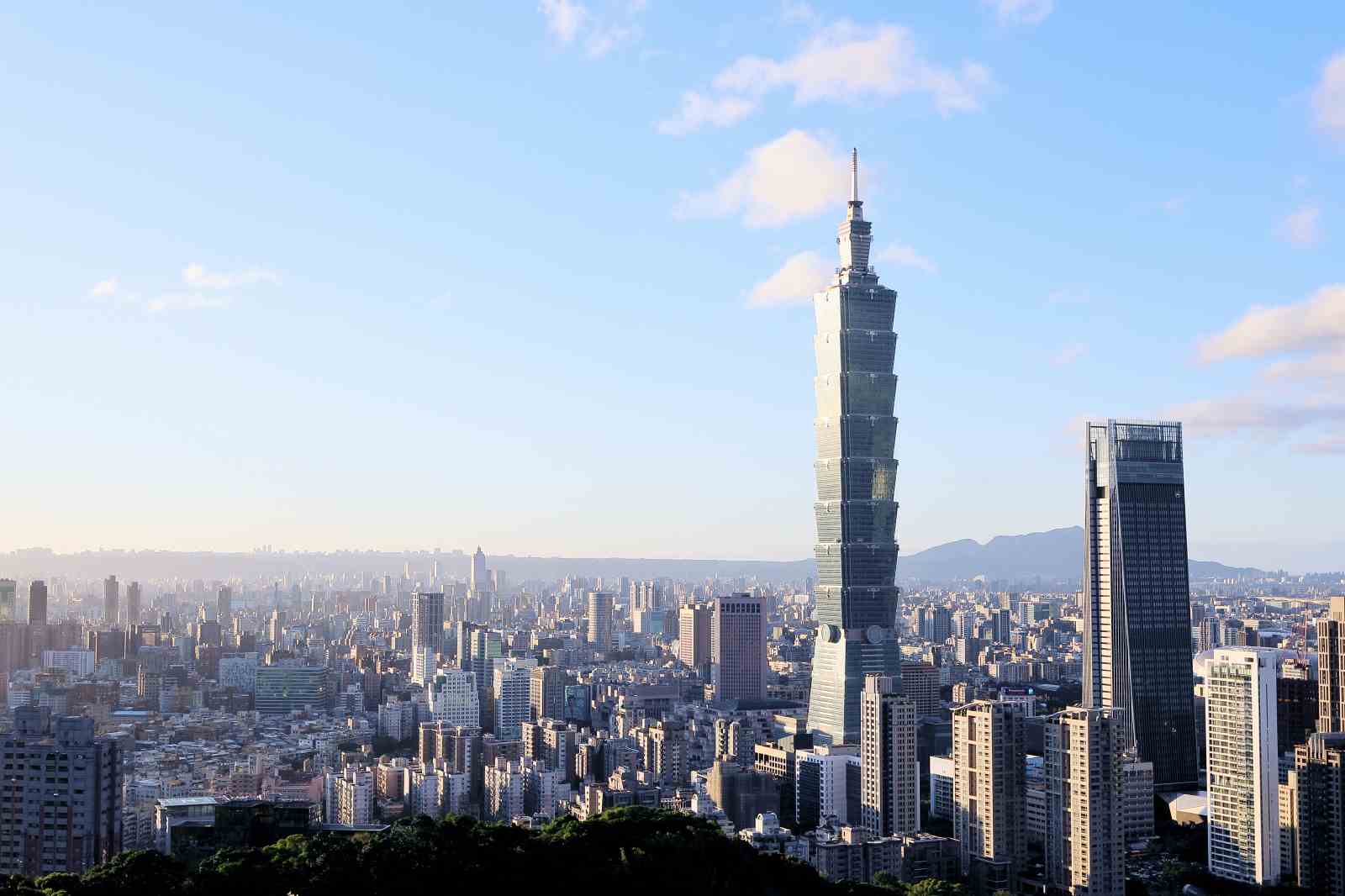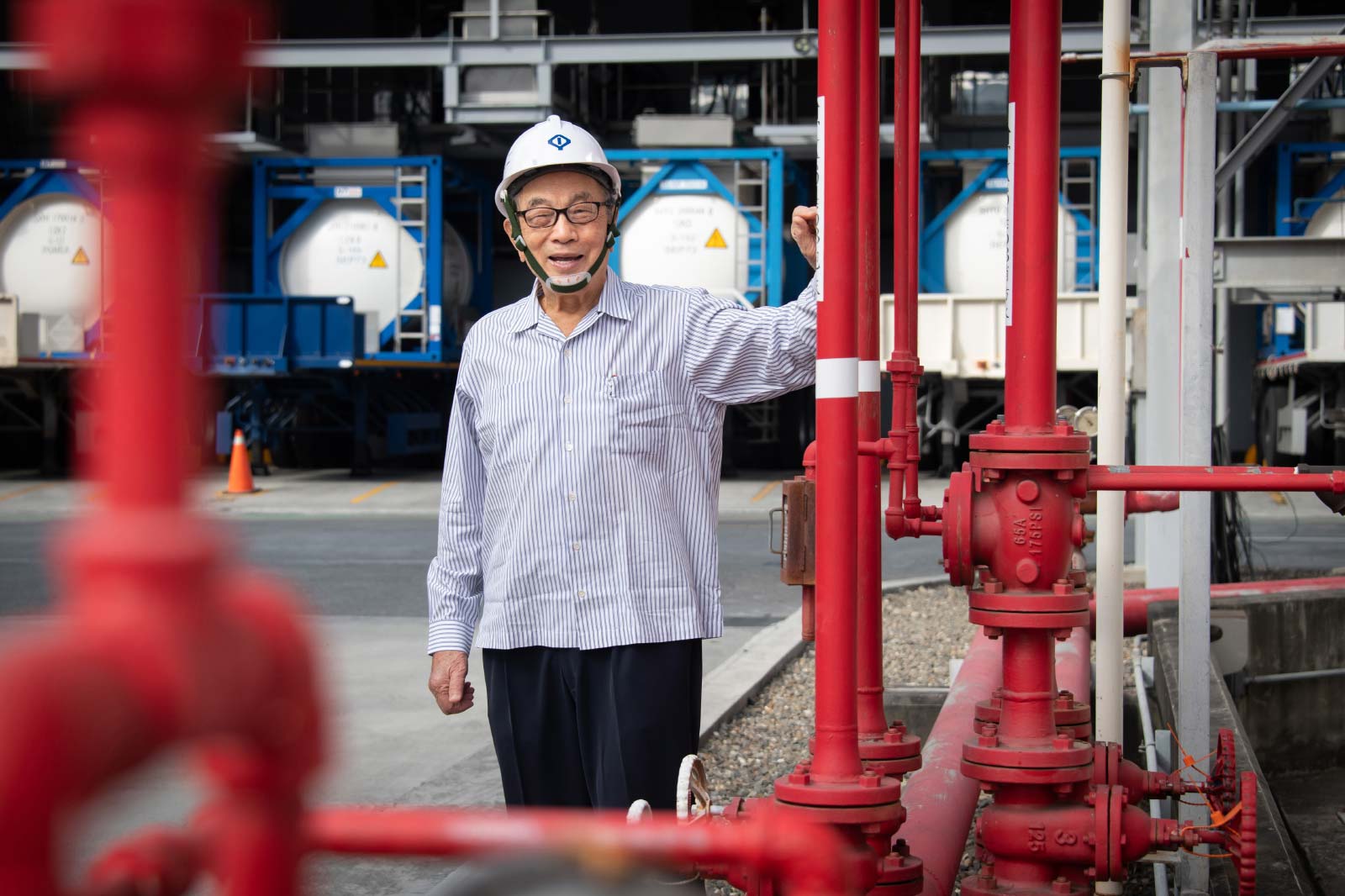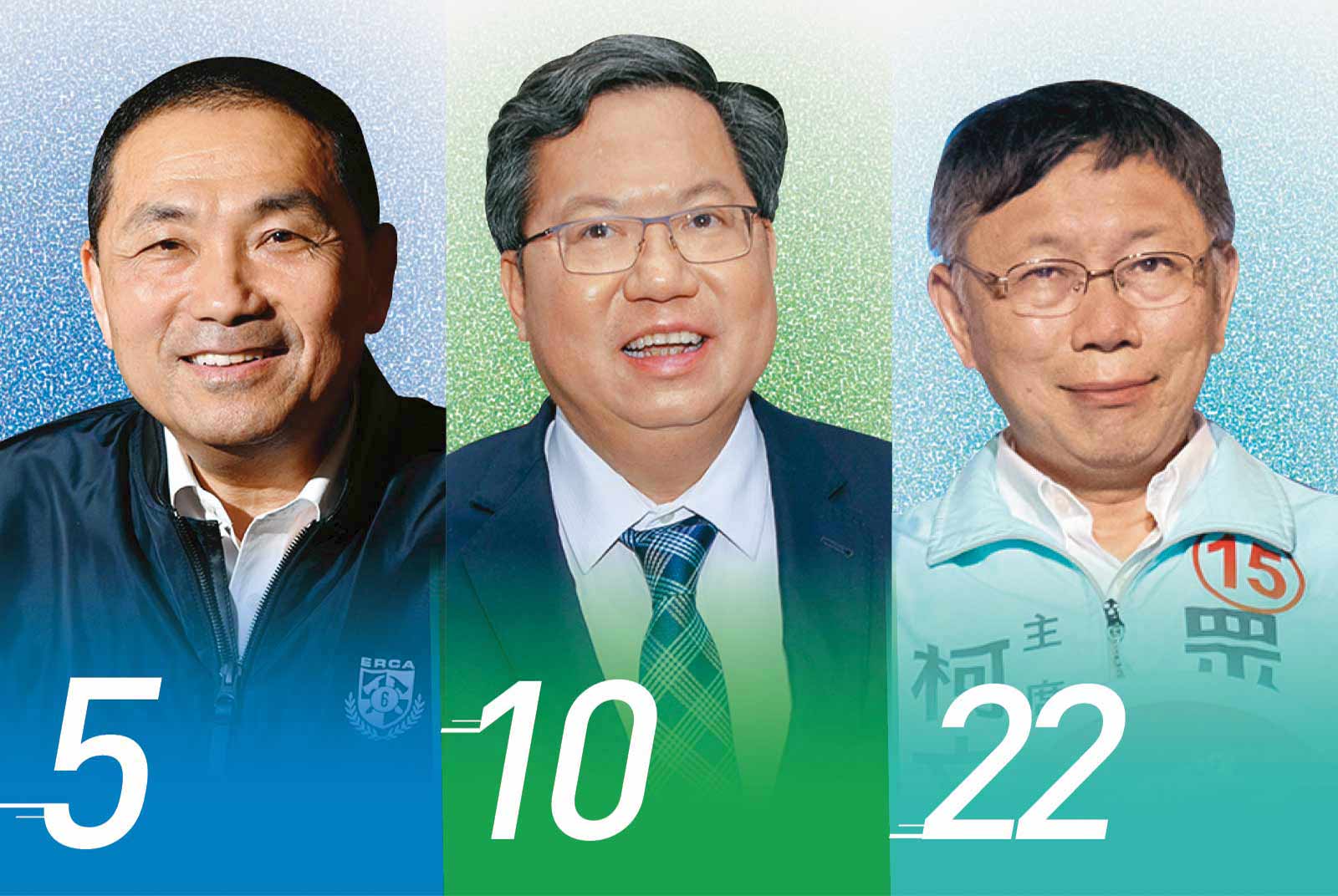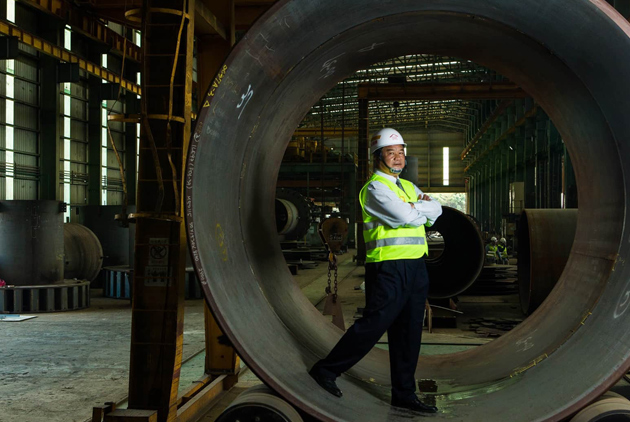Taipei Residents: Are You Truly Happy?
CommonWealth 2019 City Happiness Survey: Taiwan’s Capital Scores Top Across the Board
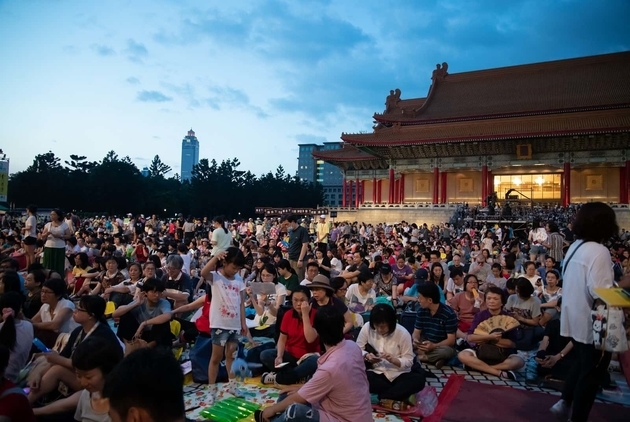
Source:Ming-Tang Huang
Taipei put up a stunning performance in this year’s City Happiness Survey by CommonWealth Magazine, winning top scores for all objective indicators. However, when it comes to the more subjective opinion poll score, the capital city did not fare so well. The survey results show that, on top of providing residents with a decent livelihood, cities also need to fulfill more spiritual aspects of human life to make their residents happy and proud.
Views
CommonWealth 2019 City Happiness Survey: Taiwan’s Capital Scores Top Across the Board
By CommonWealth MagazineFrom CommonWealth Magazine (vol. 681 )
►The CommonWealth Magazine survey of the local municipalities consists of two parts: The City Happiness Survey on the popularity of Taiwan’s 22 cities and counties, and the Local Leader Approval Survey, a telephone survey on the performance of city mayors and county magistrates. To download the survey and the complete list of indicators, click here.

Is The City Where You Live a Happy One?
The 2019 City Happiness Survey by CommonWealth Magazine is out. The survey ranks the performance of Taiwan’s 22 cities and counties in five categories: economic vitality, environmental protection, governance, culture and education, and social welfare. A total of 73 indicators, comprising results from a survey on how residents feel about life in their respective municipalities and hard, objective statistical data, were used to calculate the competitiveness scores. (For our survey methodology, please refer to the explanation at the end of this article.)
Overall Competitiveness: Residents can be Happy Even if Objective Indicators are Lacking
Among the six special municipalities, also known as the “Big Six”, Taipei placed at the top of all five categories, snatching the crown in the overall competitiveness ranking. Taoyuan, which placed third last year, moved further up to second place this year.
It is notable that, while Taoyuan’s performance was just passable with regard to objective indicators, placing fifth, the city grabbed the top spot for the opinion poll score; In contrast, Kaohsiung, which ranked second in the objective indicator score, nonetheless brought up the rear in the opinion poll, landing the southern port city in the last place in the overall competitiveness ranking for the second year in a row. These results show that even if a city’s objective conditions are not ideal, local residents take note if a local government is making tangible efforts.
Among the counties and cities that do not count among the Big Six, Lienchiang County, which comprises the Matsu Islands group off the Chinese coast, comfortably defended its top position in the total competitiveness ranking for the fourth consecutive year. Under County Magistrate Liu Cheng-ying, who won reelection late last year, public transport was improved and medical services were enhanced, both measures that are directly felt.
In the overall ranking, Hsinchu City, the runner-up for the past three years, was relegated to third place this year, as Kinmen County soared to second place. Penghu County and Pingtung County were the municipalities that made the greatest progress, both moving up four spots in the total ranking. Penghu improved markedly in the governance category, whereas Pingtung County gained strongly in economic vitality.
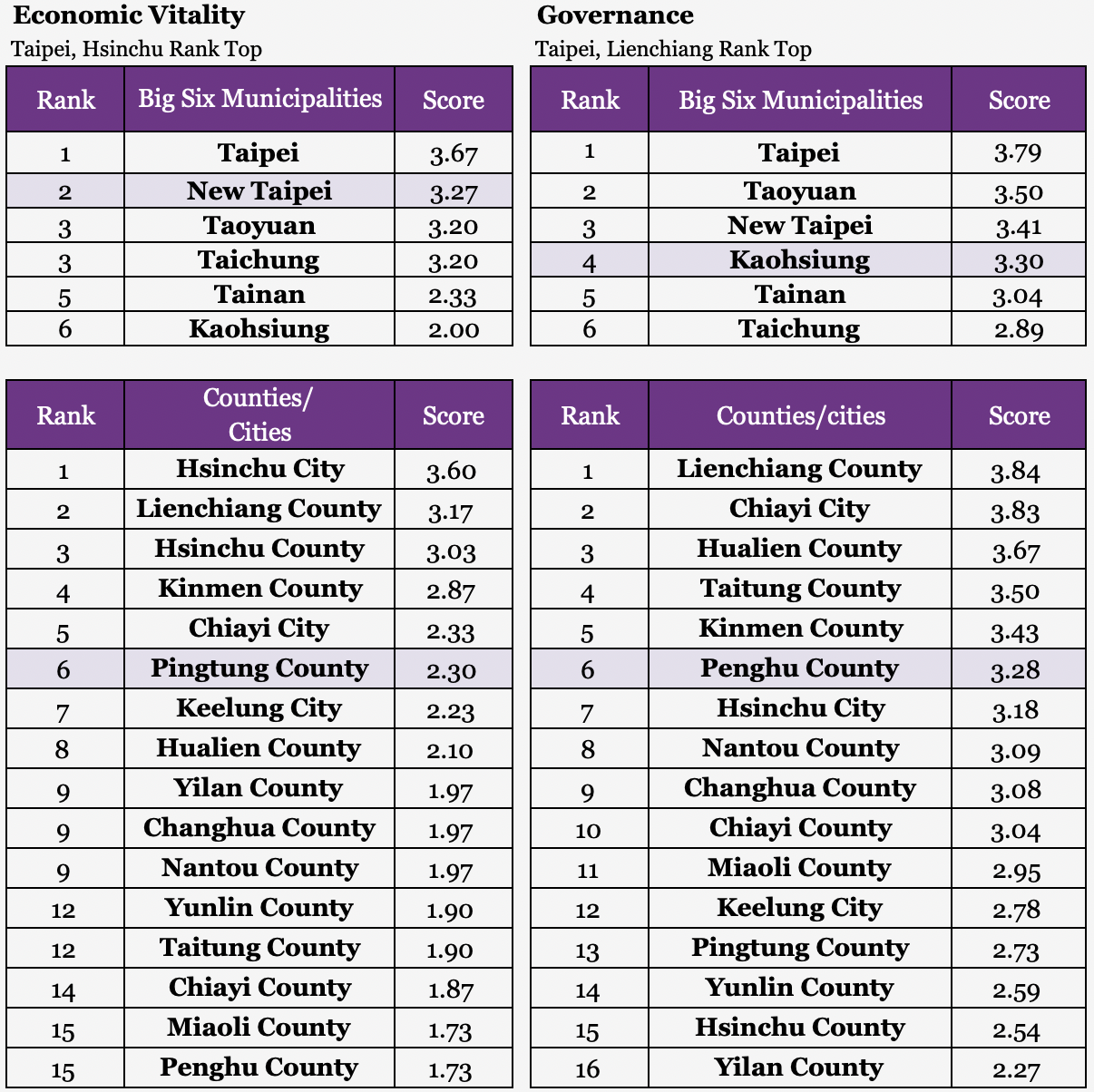
Economic Vitality: Taipei Makes a Comeback, New Taipei Leaps Forward
“Stimulating the economy” ranked high on the agenda of candidates in last year’s island-wide municipal elections.
Helped by strong objective indicators, Taipei returned to the top spot in the economic vitality category after a two-year absence. But despite the city’s continued good performance Taipei Mayor Ko Wen-je came in at the bottom of the public approval ranking, just ahead of his colleagues in Taichung and Kaohsiung.
Second-ranked New Taipei is vying to dethrone the capital. Among economic and financial experts, New Taipei City Mayor Hou You-yi is known as a “quiet cultivator” of a business-friendly environment. Taiwan’s most populous city has been successfully wooing investors, attracting 12 investment projects with a combined investment of NT$73.6 billion as of the end of July.
Hsinchu City, which hosts the Hsinchu Science Park, retained its top spot among the counties and smaller cities. Hsinchu Mayor Lin Chih-chien is well aware that residents’ sense of happiness is closely linked to the good jobs provided by the city’s technology cluster. “Residents will only feel that life is good if we continue to provide more employment opportunities and stable incomes,” says Lin.
After aggressively soliciting support for three years, Lin won approval for the Hsinchu Science Park X project, which will be established in a 28-hectare area on Gongdao 5th Road. Netherlands-based ASML, the world’s leading supplier of semiconductor manufacturing equipment, is planning to build its Taiwan headquarters here. In what he terms a conservative estimate, Lin expects the X project to create around 10,000 jobs and an output value of NT$40 billion per year once all of the companies have moved in.
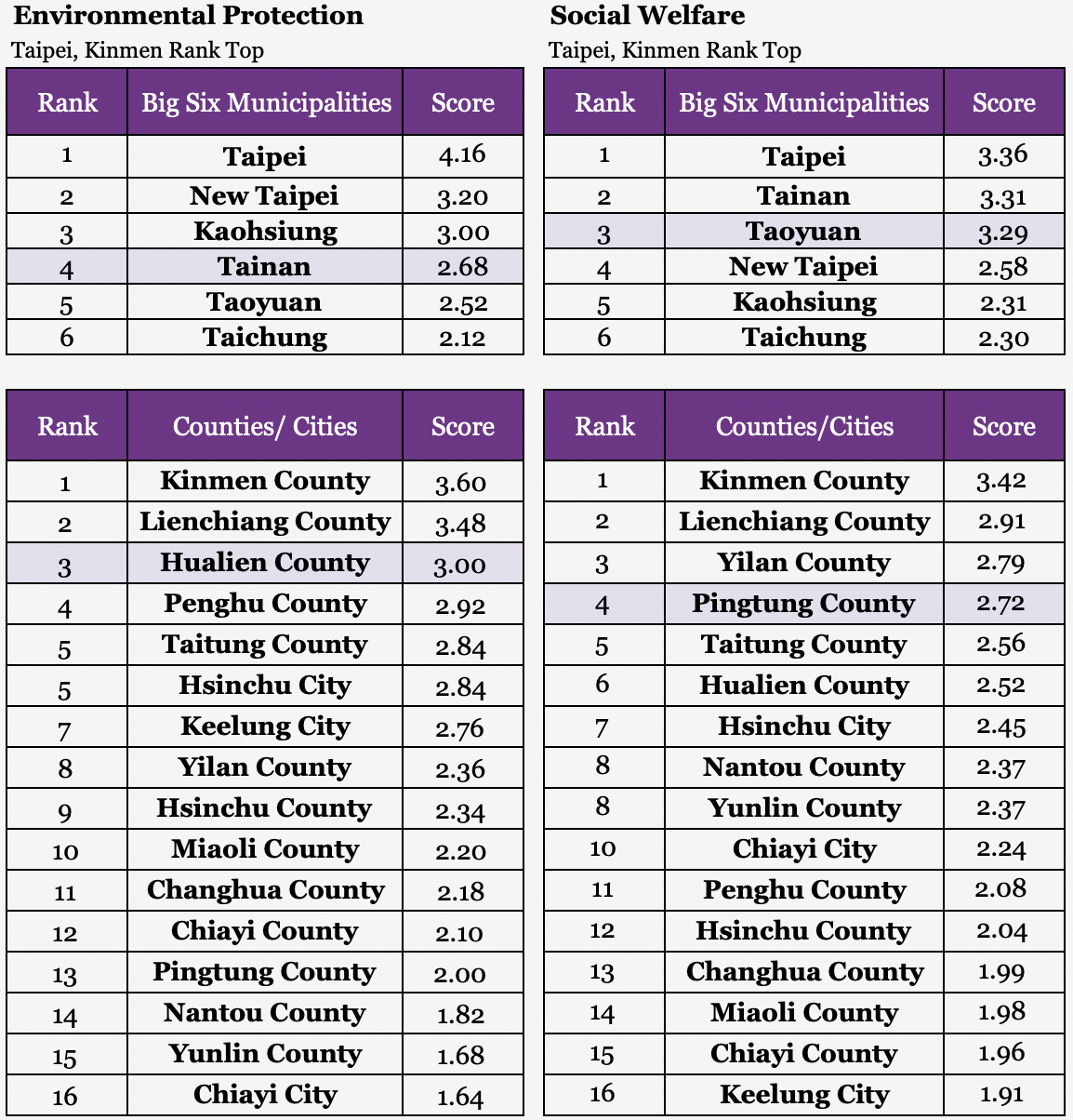
Environmental Protection: Air Pollution Pushes Taichung to the Bottom
Economic development comes at a price in that it can cause environmental problems that cannot be neglected. In terms of environmental protection, Kinmen County and Lienchiang County, both outlying island groups, as well as Taipei and New Taipei hold ranks 1 and 2 in their respective rankings.
Liao Kuei-hsien, assistant professor at the Graduate Institute of Urban Planning of National Taipei University and convener of the Taiwan River Network, notes that Taipei has a number of successful environmentally friendly projects to show.
She points to deserted, idle plots of land in the city that are now used to grow food under the city’s community gardens and urban farming program. Furthermore, 12 parks in the city are being renaturalized to protect biodiversity.
In the Big Six, which are also mature economic centers, the mayors always need to find ways to balance economic interests and the need to protect nature. In election campaigns, environmental issues can even make or break mayoral bids.
Taichung has fallen to the bottom rank this year due to the severe air pollution from the coal-fired Taichung Power Plant. In contrast, Tainan, which was at the bottom of the list last year, climbed to rank four, which may be attributed to the abandonment of plans for an industrial waste landfill in Longqi township, a rural area famous for its limestone formations.
Liao says that, while Taichung Mayor Lu Shiow-yen has taken some steps to address air pollution after taking office, most experts believe that the measures are not enough.
Aside from expert ratings, opinion polls also reliably reflect how local residents judge their local leader’s policy planning and executive efficiency. Among the 22 local leaders, Kaohsiung Mayor Han Kuo-yu was seen as least interested in the environment, with just 47.3 percent of locals believing that he attaches importance to environmental protection, less than for any other mayor or magistrate.
Social Welfare: Political Favoritism Causes Neglect of Real Needs
We all have our individual definition of “happiness”. Some people emphasize material well being, while others focus on a livable residential environment. But it cannot be denied that social welfare issues most directly affect peoples’ lives.
Taipei and Kinmen County placed first this year in the social welfare category.
Chang Hu-hui, convener of the Research and Development Committee of charity organization United Way of Taiwan, believes this is no reason to rest on one’s laurels. “Taipei City has an outstanding social welfare team but the problem is that their vision is falls short.” Chang thinks the capital should strive to become the nation’s model by latching on to industry trends and taking inspiration from international policy. It should rethink its role by formulating complementary social welfare policies to address problems arising from the increasing number of single person and childless couple households instead of simply playing along with and executing national policy.
Social welfare policy must be “felt” by local residents, be based on the family as a unit and tailored to local conditions, while pooling resources across all government agencies and using them wisely – this remains the highest guiding principle.
Chang points to the example of Hualien County, which has established four social welfare centers evenly distributed from north to south to better service residents across the county’s long, narrow territory along the central mountain range on Taiwan’s east coast. The centers offer social welfare and medical services for all age groups from newborns to senior citizens in urban, rural and indigenous neighborhoods. As a result, 83.7 percent of locals believe their county magistrate cares about disadvantaged groups.
Chang notes that communities can also learn from each other. Zhushan Township in Nantou County, for instance, has set up a social welfare community flagship program, under which neighborhoods with strengths in different fields such as elderly care, childcare or women’s welfare assist other communities in improving their offerings.
Chang also discovered that, after the latest local elections, more than half of the social welfare departments in Taiwan’s 22 cities and counties were not led by bureaucrats with a relevant professional background. “When social welfare posts are used as political rewards, people’s real needs are neglected,” says Chang. She is concerned that such lack of professionalism will lead to lavish spending on showy short-lived events such as fireworks, sowing discord among the public.

Culture and Education: Resisting Change is Difficult, Taitung Arts Treasure Sustainability
The saying goes that it takes ten year to grow a tree, but a hundred years to bring up a generation of good people. On the culture and education front, not just in social welfare, we need to take a long-term approach and avoid just going through the motions.
Taitung County and Tainan City, located on the southeastern and southwestern coast of Taiwan, respectively, both failed to gain top scores in the culture and education category. Nevertheless, both municipalities boast art festivals and cultural heritage events that are successfully marketed as place brands to motivate people from across Taiwan to visit them.
The image of Taitung has changed completely since the county launched the annual Chishang Autumn Harvest Festival and the Taiwan East Coast Land Arts Festival years ago, and hosted one-off international events such as the 2016 Vocal Asia Festival, an a capella competition (Read: Taitung, the Globetrotting Ironman and Surfer’s Shangri-La). “Culture is the image that a city projects to the outside. The mood and atmosphere that transpires...this thing is probably very vague, but it defines the culture of the city in question,” explains former Taitung County Magistrate Justin Huang.
After Huang assumed his magistrate’s post in late 2009, he secured a growing budget year after year to sponsor performing arts groups to stage performances in Taitung. The county government would buy tickets in bulk and sell them with a rebate to local residents to cultivate an audience that was ready to pay for performing arts events. “If a city wants to display such qualities, you need to nurture [art appreciation] little by little. Sometimes it might take an entire generation,” notes Huang, who has never rushed things.
Last year, Taitung performed better than the Big Six in the indicator “number of arts events and performances seen per person” with 19.34 events per person. This year, that figure fell to 15.99 times but still puts Taitung in fourth place nationwide.
Lo Su-pin, who moved to Taitung 15 years ago to open the SuSu Second-hand Bookstore, observes that arts events in Taitung always focus on sustainability and a strong connection with the local community (Read: Join Artists in Taitung). Pointing to local installation art, Lo notes that when artists scout locations for their works, they usually conduct a field study of prospective sites to ensure that any adverse impact to the natural environment is kept to a minimum.
Liang Cheng-hsien, head of the Chishang Culture and Arts Association, had found that the locals no longer call for infrastructure development. Instead, keeping the original face of Chishang’s culture and life has become the focus. “Contrary to what one might expect, remaining unchanged is most difficult,” says Liang.
This July, newly elected Magistrate Yao Ching-ling announced the formation of the Taitung Youth Culture Observer Team. Under the scheme, representatives from 17 fields will participate in talks to give travelers deeper insights into local culture.

Banking on Culture to Gain Metropolis Status, Entire City Serves as Stage
Let’s switch our focus to Tainan. In 2010, when Taiwan’s local governments were restructured, Greater Tainan, resulting from the merger of Tainan City with Tainan County, had a combined population of just 1.88 million people, falling short of the 2 million required for special municipality status. In the end, Tainan was elevated to a special municipality nonetheless, thanks to its rich cultural heritage spanning nearly 400 years. (Read: Exploring the History, Handicrafts and Culture of Tainan City)
Among the Big Six, Tainan ranks only fourth in terms of number of arts and culture events held in the city per year. But 75.6 percent of the locals, more than in any other metropolis, feel that their city offers a rich cultural scene.
It’s because the whole city serves as a stage. “Although Tainan does not have a big arena, we have pretty lanes and alleys, and our old relics and temples are very unique,” says Yeh Tse-shan, director of the city government’s Cultural Affairs Bureau, with pride.
The annual Tainan Arts Festival, first held in 2012, uses places of historic interest, temples and other outdoor locations as performance venues. Despite the hot weather in the south, tickets for the events usually sell well. The Arts to District program ensures that people in the more rural areas of former Tainan County also get to enjoy a variety of artistic performances in their neighborhoods.
“After the Tainan Arts Festival began, it became an integral part of people’s lives. Now everyone is a theatergoer,” says Pun Chen, director and choreographer at Fevervine Dance Theater, who was born and grew up in the city.
Ticket sales for performances at the Tainan Municipal Cultural Center stand at an average of80 percent and around 70 percent for the Xinying Cultural Center. Tainan-born pianist Eva Shen, who has served as artistic director of the Tainan Arts Festival since 2016, hopes that the festival will strengthen the locals’ appreciation for culture.
In Taitung and Tainan, local residents’ identification with their city is definitely stronger than in other places. Cities without culture lack a unique character; they are like empty shells without a soul. Even though they are economically well developed, they are no more than a piece of land plastered with high-rises.
How do you boost the economy and also create conditions to let urban culture take root? Amid a globalizing world, Taiwan’s 22 local leaders will have to face the challenge to build happy cities.
Every year, the Chishang Autumn Harvest Festival, which enters its 11th year this year and highlights local culture, attracts visitors to Taitung. Famous artists such as Taiwanese singers A-mei and Wu Bai as well as the Cloud Gate Theater troupe have performed on this stage in the midst of ripening rice fields. (Source: Cloud Gate Theater)
About the Ratings in the CommonWealth Magazine 2019 City Happiness Survey
To understand the current development of Taiwan’s 22 municipalities, CommonWealth Magazine uses a total of 73 objective and subjective indicators reflecting economic vitality, environmental protection, governance, culture and education as well as social welfare from which to derive a City Happiness ranking. Taking into account the fact that development differs between the major conurbations and more rural areas, the municipalities were divided into two groups – the six special municipalities and the remaining smaller cities and counties. The scores for individual indicators in both groups were calculated by dividing the range between the largest and smallest values into five groups. Municipalities whose performance fell into the best group were given a score of 5, those in the second-best group were given a score of 4, and so on.
The objective indicators were taken from 2018 surveys conducted at various government levels and statistical data, whereas the subjective indicators stem from a public opinion poll by CommonWealth Magazine. The objective indicators had a weighting of 80 percent, and the latter ones counted 20 percent. Finally, the average of each municipality’s subscores in the five categories was taken and converted using a 1,000-point grading system to arrive at the final score.
Local Leader Approval Survey Grading Method
The annual CommonWealth Local Leader Approval Survey, which launched in 2010, gauges public and expert satisfaction with the performance of Taiwan’s local chief executives. The public opinion poll results account for 80 percent of the final ranking (30 percent satisfaction with overall performance, 10 percent for performance in each of the five categories) and the expert scores account for 20 percent of the total ( 10 percent each for overall performance and performance in subcategories).
About the Public Opinion Survey
The public opinion survey was conducted between July 18 and August 22, 2019 covering residents 20 years of age and older throughout Taiwan. A total of 14,818 valid responses were obtained via telephone using stratified random sampling. Each of the 22 cities and counties was surveyed as a separate unit. In order to ensure representativeness, between 550 and 1,004 completed responses were required per county or city, depending on the total population of each jurisdiction.
This year, another survey via mobile phone was concurrently conducted in the six special municipalities, with a total of 200 valid responses being obtained per city. The landline and mobile phone samples were combined using the pooled estimate method by Chang Teng-wen, Huang Tong-yi and Hung Yung-tai (2017). The data were further pooled using the landline-mobile phone ratio used by the National Development Council. Therefore, the pooled sample statistics are valid.
The poll had a confidence level of 95 percent and a margin of error of plus/minus 3.1-6.9 percent for each area surveyed. (Lienchiang County had 200 valid responses, yielding a margin of error of plus/minus 6.9 percent.) The margin of error for the entire area surveyed was plus/minus 0.8 percent. Statistical representativeness verification and weighted processing were applied to all data, based on gender, age and educational level.
Rating by Experts in the Local Leader Approval Survey
Between July 22 and August 6, 2019, CommonWealth Magazine worked with the National Association of Small & Medium Enterprises R.O.C., the Taiwan River Network, the National Association for the Promotion of Community University (NAPCU), and the United Way of Taiwan, asking the four organizations to recommend scholars and experts with intimate knowledge of local government affairs in their respective fields to rank the performance of local government leaders. A total of 613 experts took part in the approval survey on 22 local chief executives by filling out questionnaires.
Translated by Susanne Ganz
Edited by TC Lin, Sharon Tseng






